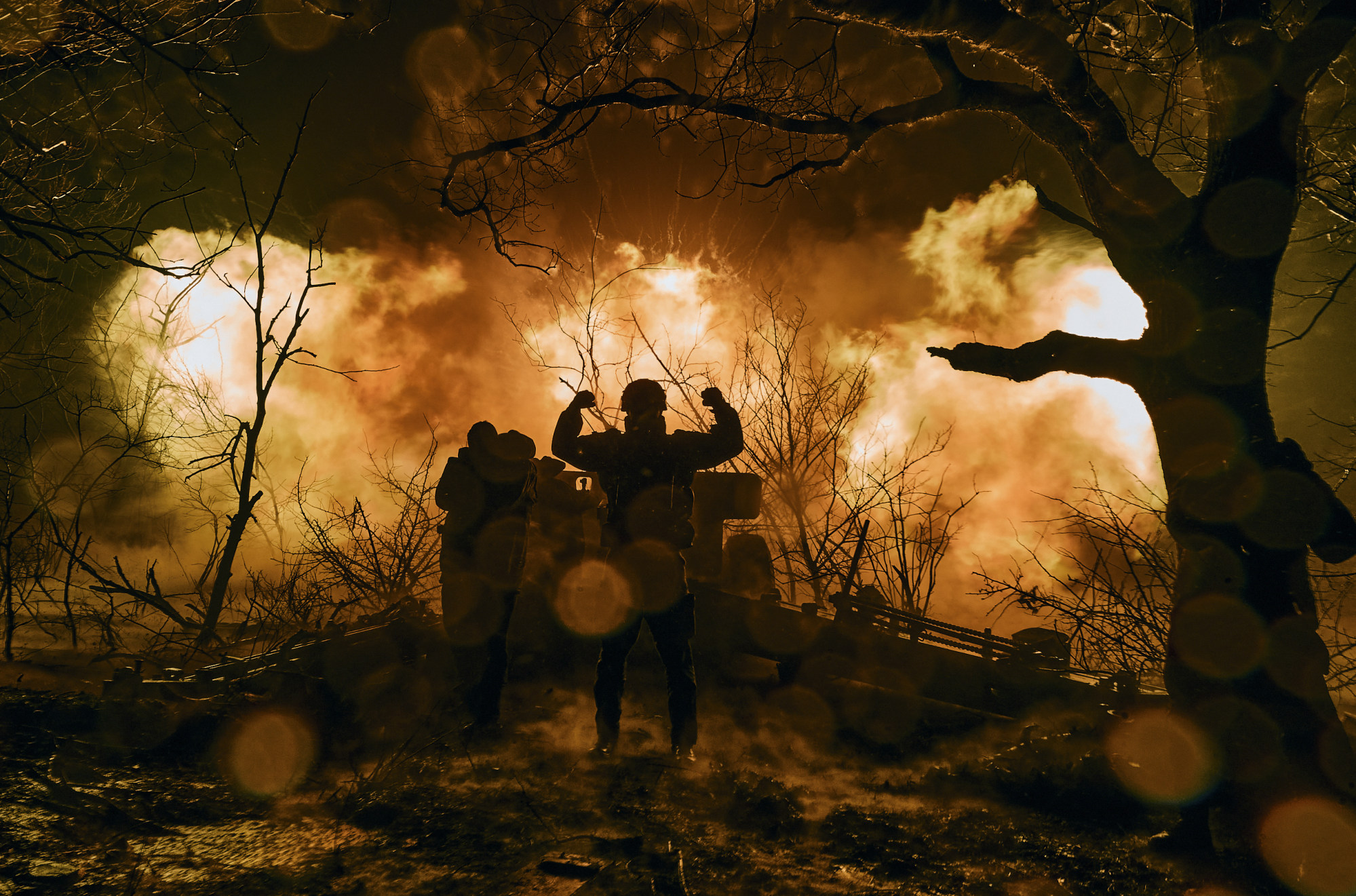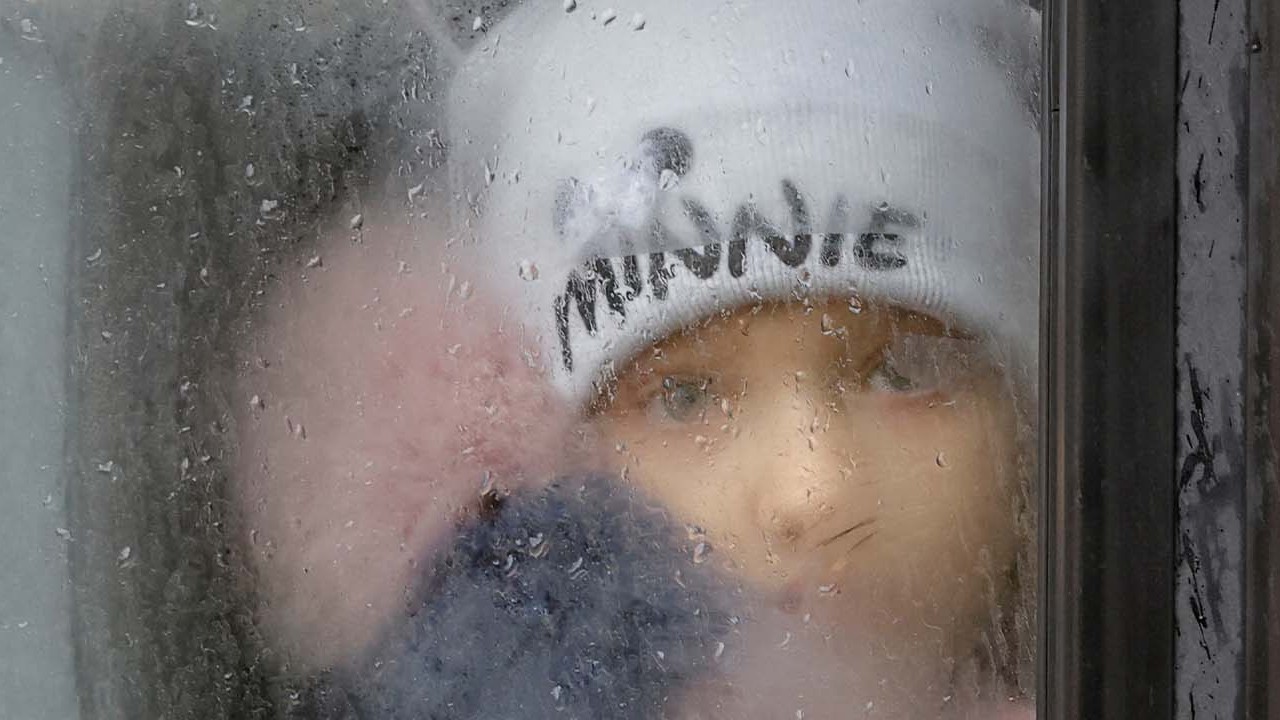
Ukraine war enters new phase with first winter since Russia’s invasion
- Ukraine’s forces aiming to stop Russians from regrouping as temperatures drop
- Up to 13,000 Ukrainian soldiers have been killed since February, Zelensky aide says
Winter is coming to the battleground in Ukraine, raising many questions about how to fight the war and, in some corners, whether the war can be fought at all.
On the desolate battlefronts of southern and eastern Ukraine, the clinging, claylike mud of late autumn is beginning to congeal into iciness. As snow flurries and freezing temperatures set in, the last thing this country’s leaders want is for the war’s front lines to harden in place as well.
Any wintertime let-up in combat operations, Ukrainian officials believe, would give Russia’s beleaguered army a chance to rest, regroup and try to seize momentum that has eluded Moscow’s forces throughout more than nine months of fighting.
So, even during the coming cold months, Ukraine is determined to keep up military pressure on a numerically superior but faltering foe.
But Russia is employing a pressure tactic of its own: deliberate destruction of Ukraine’s energy infrastructure, with civilian morale as an indirect target.
Waves of bombardment that began in earnest in early October, aimed at targets such as thermal plants and electrical substations, have brought the national power grid to the brink of collapse, just as temperatures are plummeting.
EU says Russia must pay for Ukraine reconstruction
Ukrainian officials and Western allies have taken to calling it the weaponisation of winter.
Russian Foreign Minister Sergey Lavrov, speaking during an annual news conference in Moscow, defended recent missile strikes, saying it was targeting Ukraine’s civil infrastructure to prevent Kyiv from importing Western arms.
He did not explain how such attacks could achieve that aim.
“We disable energy facilities (in Ukraine) that allow you (the West) to pump lethal weapons into Ukraine to kill Russians,” Lavrov said.
“So don’t say that the US and Nato are not participants in this war – you are directly participating.”
In Ukraine’s cities, towns and villages, authorities are setting up thousands of insulated tents known as “invincibility points” where people can warm themselves, drink hot tea and charge their phones and other devices.

In urban high-rise housing blocks, residents band together to leave care packages in lifts – water, diapers, snacks – for anyone caught by an unexpected outage.
Ukraine expects the punishing onslaught to continue.
“As long as they have missiles, they won’t stop, unfortunately,” Ukrainian President Volodymyr Zelensky said in a video address this week.
Acknowledging what has become the dual-front nature of the war – the military’s need for sophisticated armaments, both offensive and defensive, and the burgeoning needs of an electricity-starved populace – Ukraine’s defence minister, Dmytro Kuleba, succinctly summed up his country’s wish list.
Russia firing unarmed missiles to deplete Ukraine air defence: US official
“Patriots and transformers,” he told reporters on the sidelines of this week’s Nato summit in Romania, referring to sophisticated missile-defence systems and devices that transfer energy from one electrical circuit to another, which are in short supply as urgent power-grid repairs continue around the clock.
US and Nato officials this week seemed to be addressing that wish list. As a supplement to the nearly US$40 billion in weapons and military equipment the West is shipping to Ukraine, the US announced a US$53-million package of “energy aid”, including the crucial transformers as well as generators and spare parts for electrical systems.

“That’s going to get to Ukraine not in a matter of months, but in a matter of days or weeks,” US Secretary of State Antony Blinken said on Wednesday at the Romania conference. He acknowledged, however, that the US will have to make a shift in the type of weapons it’s providing to include more sophisticated air-defence systems.
Otherwise, Blinken said, Ukraine and its backers face “a process that keeps repeating itself. Stuff gets replaced; it gets destroyed; it gets replaced again”. He termed Russia’s campaign to “freeze and starve” the people of Ukraine “barbaric”.
Despite harsh weather in the field, or perhaps because of them, Western analysts and officials believe Ukrainian commanders will keep pushing during the cold weather months to recapture more territory controlled by Russia, amounting to about one-fifth of the country.
US and Russia have used Ukraine war ‘deconfliction’ hotline once so far
In a winter preview, British military intelligence said last month that “changes to daylight hours, temperature, and weather will present unique challenges” for both sides.
The assessment said, though, that Nato-standard cold-weather gear provided to Ukrainian forces would help protect against hypothermia.
Autumn rain, and resulting thick mud, has slowed the pace of battle, but freezing ground later in winter will again allow freer movement of heavy equipment – one reason Putin waited until February to invade.
But the forecast is brutal in places such as Bakhmut, an eastern city that has been a vortex of carnage unleashed by Russian forces, including mercenaries from the notorious private Wagner group.
The devastated landscape, riddled with tree stumps and water-filled shell holes, hauntingly evokes scenes of trench warfare in World War I.
In the south, the Black Sea coast may now be a crucial springboard for Ukrainian forces. For months, Ukraine successfully defended the city of Mykolayiv, though deadly, near-constant missile attacks ravaged parts of it.
The city of Kherson, now freed from an eight-month Russian occupation, has been under fierce Russian shelling from across the Dnieper River, where Moscow’s forces have been fortifying their defences in anticipation of a renewed Ukrainian push.
For Ukraine, even victories are clouded by suffering. Last month, authorities began evacuating civilians from recently recaptured areas of Kherson and Mykolayiv provinces, foreseeing that winter conditions will simply be too difficult due to lack of heat, power and water.
Faking Covid outbreak helped Ukraine hospital resist Russian troops
There are no political talks under way to end the war. Zelensky has said he will negotiate only with the “next” president of Russia, not Vladimir Putin.
The war’s death toll also continues to grow. Ukraine’s armed forces have lost somewhere between 10,000 and 13,000 soldiers so far, presidential adviser Mykhailo Podolyak told a Ukrainian television network on Thursday.
The remarks appeared to be the first estimate of dead since late August, when the head of the armed forces said nearly 9,000 military personnel had been killed.
“We have official figures from the general staff, we have official figures from the top command, and they amount to (between) 10,000 and 12,500 to 13,000 killed,” Podolyak told the Kanal 24 channel.
“We are open in talking about the number of dead,” he added, saying more soldiers had been wounded than had died.
Last month America’s top general estimated that Russia’s military had seen more than 100,000 of its soldiers killed and wounded in Ukraine, and added Kyiv’s armed forces “probably” suffered a similar level of casualties.
Zelensky adviser Oleksiy Arestovych, speaking in a video interview on Wednesday, said the Russian death toll was around seven times that of Ukraine’s.
Additional reporting by Agence France-Presse and Reuters


